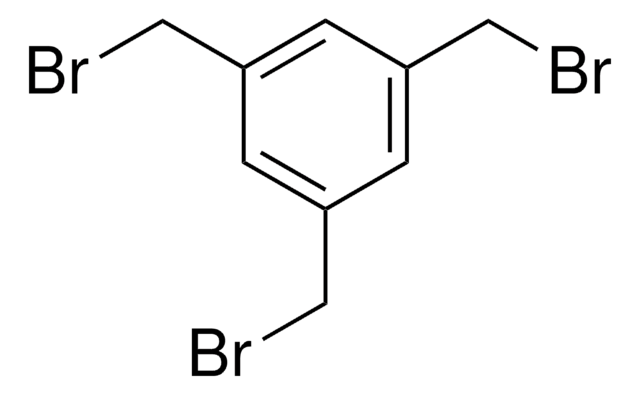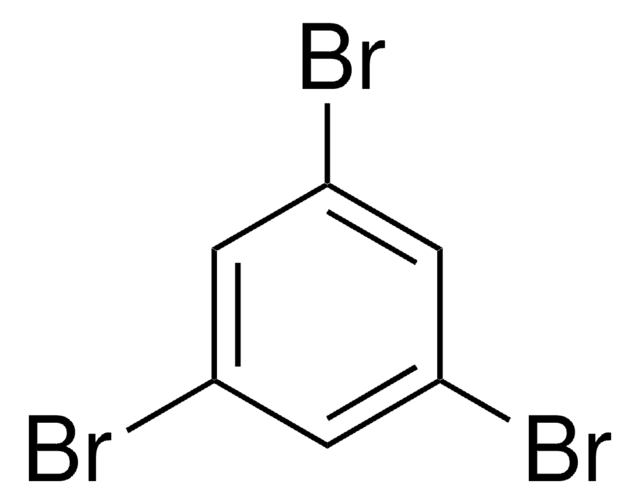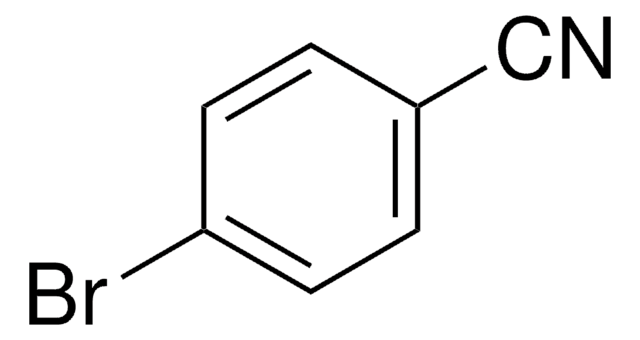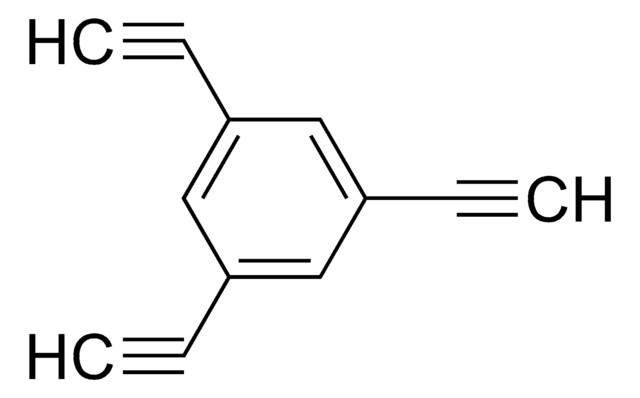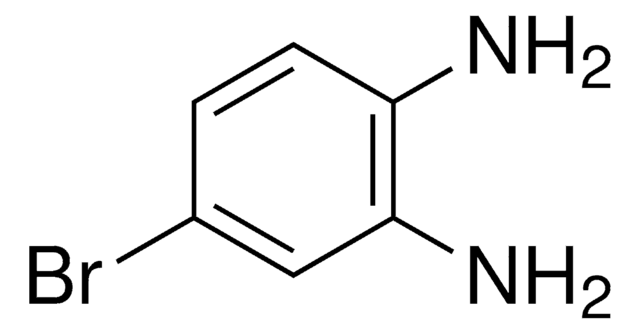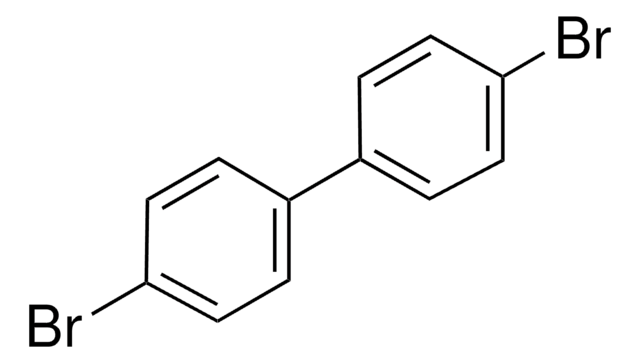648906
1,3,5-Tris(4-bromophenyl)benzene
97%
Iniciar sesiónpara Ver la Fijación de precios por contrato y de la organización
About This Item
Fórmula empírica (notación de Hill):
C24H15Br3
Número de CAS:
Peso molecular:
543.09
Número MDL:
Código UNSPSC:
12352103
ID de la sustancia en PubChem:
NACRES:
NA.23
Productos recomendados
Nivel de calidad
Análisis
97%
formulario
solid
mp
261-265 °C
cadena SMILES
Brc1ccc(cc1)-c2cc(cc(c2)-c3ccc(Br)cc3)-c4ccc(Br)cc4
InChI
1S/C24H15Br3/c25-22-7-1-16(2-8-22)19-13-20(17-3-9-23(26)10-4-17)15-21(14-19)18-5-11-24(27)12-6-18/h1-15H
Clave InChI
HJQRITCAXSBOPC-UHFFFAOYSA-N
Descripción general
1,3,5-Tris(4-bromophenyl)benzene (TBB) is a halogenated aromatic monomer that can be used in the formation of covalent aromatic frameworks(COF).
Aplicación
TBB can be used to synthesize porous aromatic frameworks for the development of adsorption membranes to treat organic pollutants. It can also be used in the fabrication of pyridine based high efficiency organic light emitting diodes(OLEDs).
Palabra de señalización
Danger
Frases de peligro
Consejos de prudencia
Clasificaciones de peligro
Aquatic Chronic 4 - Eye Dam. 1
Código de clase de almacenamiento
11 - Combustible Solids
Clase de riesgo para el agua (WGK)
WGK 3
Punto de inflamabilidad (°F)
Not applicable
Punto de inflamabilidad (°C)
Not applicable
Equipo de protección personal
dust mask type N95 (US), Eyeshields, Gloves
Elija entre una de las versiones más recientes:
¿Ya tiene este producto?
Encuentre la documentación para los productos que ha comprado recientemente en la Biblioteca de documentos.
Los clientes también vieron
Surface mediated synthesis of 2D covalent organic frameworks: 1, 3, 5-tris (4-bromophenyl) benzene on graphite (001), Cu (111), and Ag (110)
Gutzler R, et al.
Chemical Communications (Cambridge, England), 4456-4458 (2009)
Star-shaped oligothiophenes for solution-processible organic electronics: flexible aliphatic spacers approach
Ponomarenko SA, et al.
Chemistry of Materials, 18(17), 4101-4108 (2006)
Pyridine-containing triphenylbenzene derivatives with high electron mobility for highly efficient phosphorescent OLEDs
Su, Shi-Jian; Chiba, Takayuki; et al.
Advanced Materials, 20(11), 2125-2130 (2008)
Synthesis of a porous aromatic framework for adsorbing organic pollutants application
Ren H, et al.
Journal of Materials Chemistry, 21(28), 10348-10353 (2011)
Ruiyan Sun et al.
ChemSusChem, 12(14), 3278-3285 (2019-04-30)
Methyl formate was produced in one pot through the hydrogenation of CO2 to formic acid/formate followed by an esterification step. The route offers the possibility to integrate renewable energy into the fossil-based chemical value chain. In this work, a phosphine-polymer-anchored
Nuestro equipo de científicos tiene experiencia en todas las áreas de investigación: Ciencias de la vida, Ciencia de los materiales, Síntesis química, Cromatografía, Analítica y muchas otras.
Póngase en contacto con el Servicio técnico